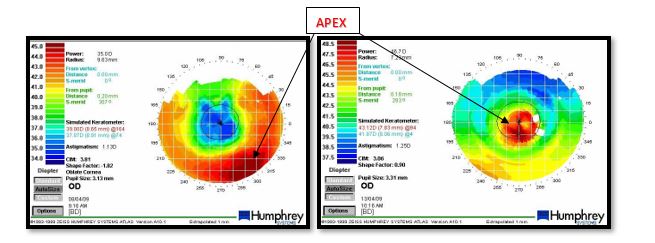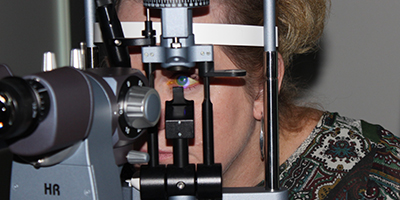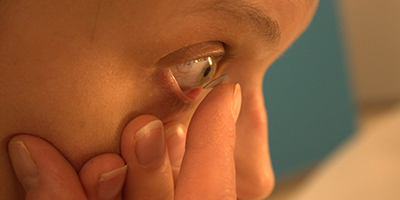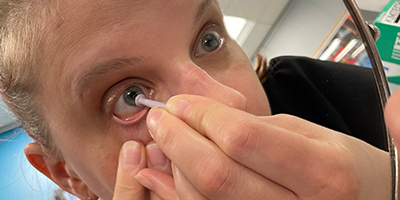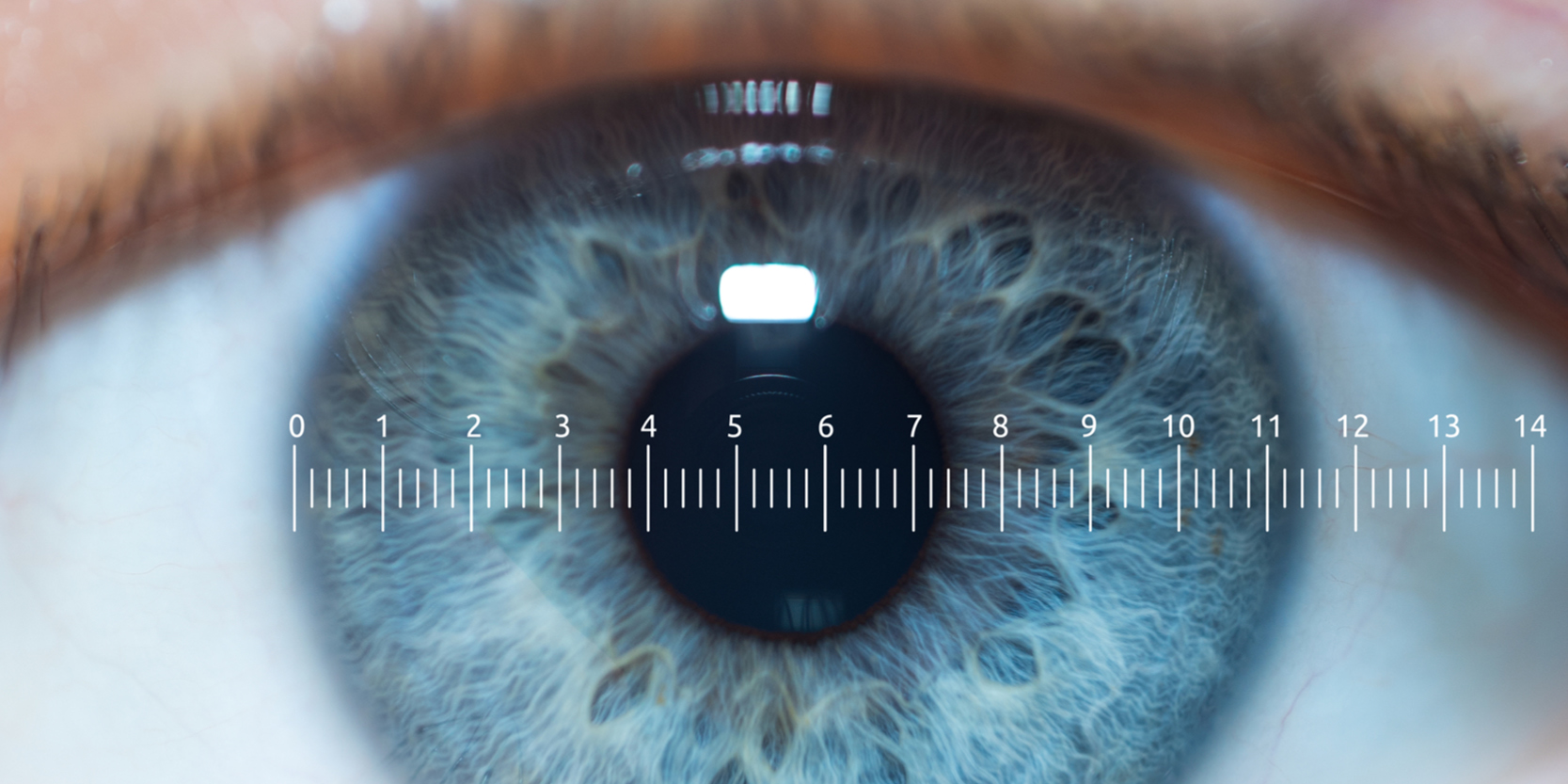
Important Measurements in Scleral Fitting
HVID
One of the most important and overlooked measurements in scleral fitting is the Horizontal Visible Iris Diameter (HVID) - also known as the white-to-white measurement. This measurement is used as the primary factor in choosing a scleral lens diameter.
Ideally, the scleral lens should be between 3.5mm to 4.5mm larger than the HVID to allow for adequate coverage and lens landing. Lens diameters are important to vault, limbal clearance and proper placement of the landing zones.
What are the best ways to measure HVID? Utilize the slit lamp, contact lens reticule or an HVID ruler.
Examples Below:
Apical Clearance
Evaluating apical clearance is a key factor in scleral lens success. Topography is a helpful tool to locate the corneal apex.
An important item to remember is the apex of the eye may not be in the visual axis or central portion of the eye. Many times, the apex is inferior to center, such as in cases of keratoconus, or in the mid-periphery, such as in cases of corneal graft or refractive surgery. Therefore, it is important to evaluate the lens over the apex, keeping this front of mind.
Apical measurements can be estimated easily with optic section and fluorescein. The images below show apical clearance compared to lens thickness.
OCT measurements can be very helpful when measuring apical clearance. Utilizing OCT over the apex can confirm the information gathered during a slit lamp exam.
I would caution practitioners utilizing OCT alone to verify apical clearance. Many times, OCT measurements are taken centrally and not over the apex of the cornea. This will provide false information regarding the lens clearance. As in a case of keratoconus or post refractive surgery, where the apex is inferior or in the mid-periphery, central readings may show 450um of clearance, while in fact, the apical clearance is closer to 200um. As the OCT only gives one line of information, the slit lamp can confirm the thinning at the apex.
To avoid these types of issues, confirm the apex of the cornea with topography or slit lamp exam. The images below show two very different apical measurements, so the OCTs should be taken in very different places to confirm apical clearance.
Instruct the person acquiring the image to focus on the apical area. As you can see in the image the OCT is focused just inferior to the pupil where the apex is confirmed in the topography. This will provide valuable information regarding the fit of the scleral lens.
These are just a few of the important measurements needed to successfully fit scleral lenses. By practicing these simple tips, fitting of scleral lenses becomes much easier and require less remakes.
Look for more tips in in future issues of this newsletter. The ABB Specialty Vision Products consultation team is always available to help. You can reach us at 800.772.3911, option 3 for consultation.



